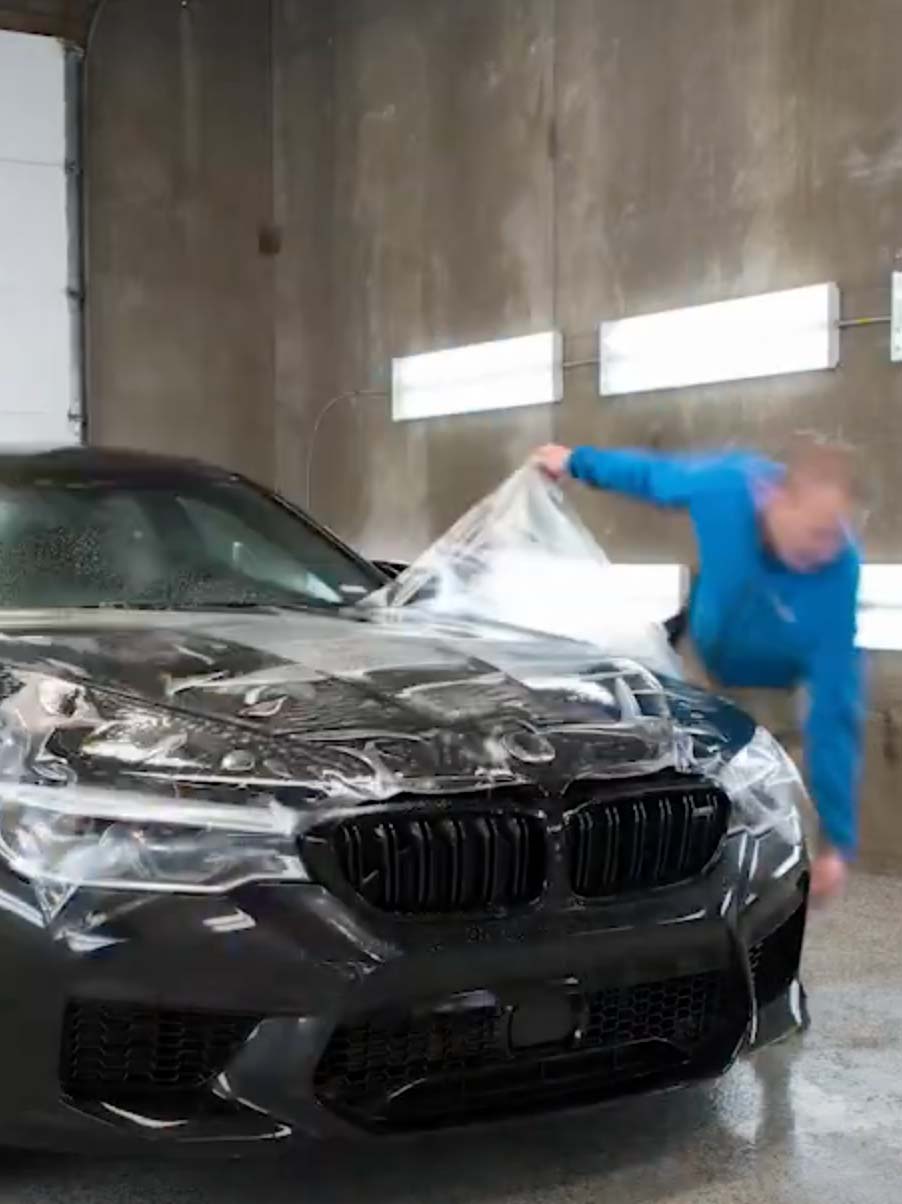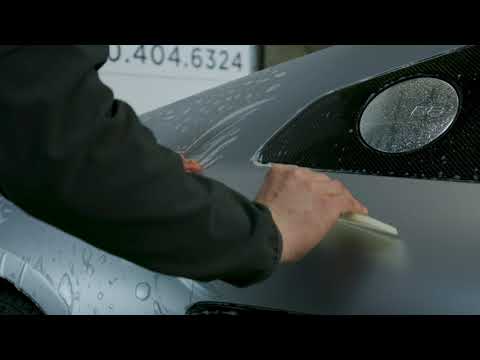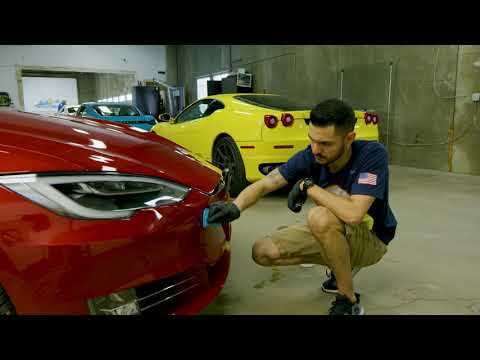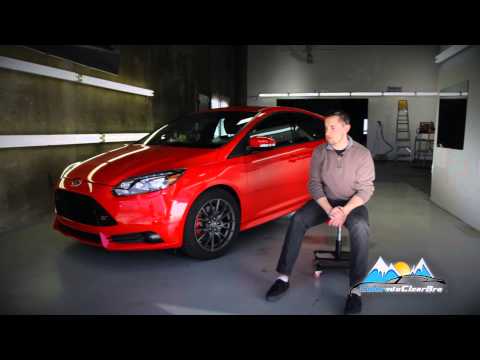Wish your car could stay this beautiful forever? Or are you wishing your car still looked the way it did when you first drove it off the lot? Nothing can be completely guaranteed, but applying a ceramic coating to your car can get pretty close to your dreams. Read our Guide: How to Prep Your Car for Ceramic Coating.
If you just bought a new car, it's risky to take your car's exterior into your own hands. If you've had a car for a while, you probably want your car to return to its former glory. Either way, prepping your car for a ceramic coating can be complicated and require patience.
Wondering what it's going to take? In this guide, you'll learn the benefits of choosing ceramic coating and the steps you must follow to get the perfect finish.
- What Is Ceramic Coating?
- Benefits of Ceramic Coating
- How to Prep Your Car for Ceramic Coating
- Find the Perfect Ceramic Coating Professional
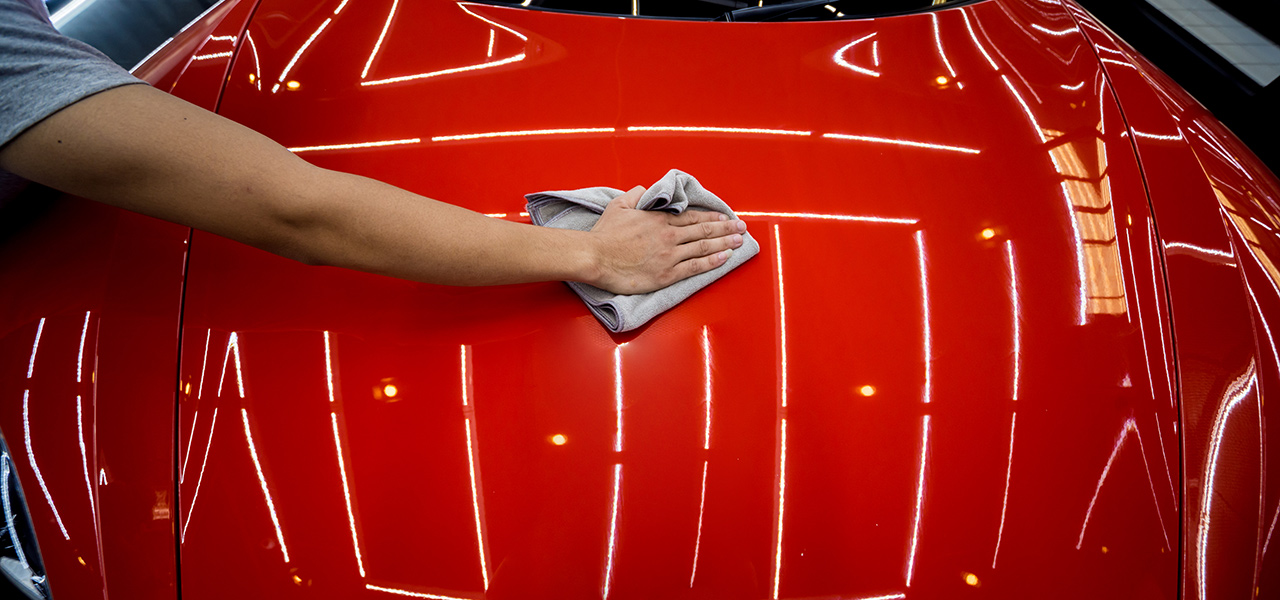
What Is Ceramic Coating?
Your car most likely already has a clear coat that came with the paint. This coat is good, but over time will wear out and fail to protect the paint. You can choose to add more protection by using a ceramic coating.
Normal clear coats offer a level of hardness between 2H and 4H. Ceramic coatings come in at a hardness of 9H+.
Ceramic coatings go on as a liquid and cure into an impenetrable solid for the protection of your car. This coating can go on in many layers to ensure the right thickness and level of protection. It becomes a permanent glass shield that can flex with your car while staying durable.
Ceramic coatings are a great addition to your car maintenance decisions because they take the beatings of everyday use while your clear coat and paint go unscathed. Unlike sealants or waxes, ceramic coatings do not wear down. In order to remove the ceramic coating, you'll have to abrasively remove it with wet sanding.
Benefits of Ceramic Coating
Ceramic coatings have a lot of great properties that make them an excellent choice for car care. Yes, ceramic coatings are permanent, so you'll never have to reapply as long as you take care of it. They also enhance the appearance of your car while protecting it from all sorts of damage.
Enhance Appearance
Ceramic coatings are clear layers that get applied to the exterior of your vehicle, so they act much like clear coats on your paint. The difference is that dirt and pollutants can settle into the pores of your original paint, while ceramic coatings do not allow for anything to sit on the surface. The effect is an everlasting gleam on your car that can't be marred by any grime.
You'll be able to achieve a glossy look for much longer than any other clear coat, wax, or sealant.
Keep Paint Looking New
You always want to drive your car, but driving means being vulnerable to scratches. A fresh paint job can look beat up in no time. With a ceramic coating, your paint and clear coat will remain unscathed by dirt, bushes, and people passing by.
It's important to remember, however, that ceramic coatings are scratch-resistant, not scratch-proof. They will protect you against minor damages.
Protect from UV Damage
Ceramic coatings protect your vehicle from all kinds of environmental threats, including the sun. UV damage can make your car's paint fade and lose its like-new appearance. Ceramic coatings can protect your car from UV rays, keeping the vibrancy and shine of your new paint job.
UV damage also contributes to oxidizing paint and causing rust. A ceramic coating can help you avoid any rusting by repelling UV rays, among other things.
Hydrophobic Effects
Ceramic coatings do not let anything settle on the surface of your car. It has hydrophobic tendencies, which means liquids will just run off the car rather than gather there. On a rainy day, you can enjoy the look of the water droplets beading and falling off.
The hydrophobic nature of your ceramic coating isn't just good for protecting against water damage. Your ceramic coating will protect your car from all kinds of chemicals.
Bird droppings can contain some harmful chemicals that will damage your paint. Cleaners, brake fluid, gasoline, and more commonly encountered chemicals can also seriously damage your car's exterior. Ceramic coatings will repel these threats and save your paint.
How to Prep Your Car for Ceramic Coating
If you've chosen to protect your car with a ceramic coating, then you'll need to start with some prep work. Ceramic coatings can only enhance an already good-looking paint job and can only bond to paint that has been prepared properly. To make sure your ceramic coating looks good and stays permanently, you'll need to follow some critical steps.
Your car must be clean, your paint must be corrected, and your exterior must be degreased.
Free Download: How to Prepare a Tesla for Ceramic Coatings
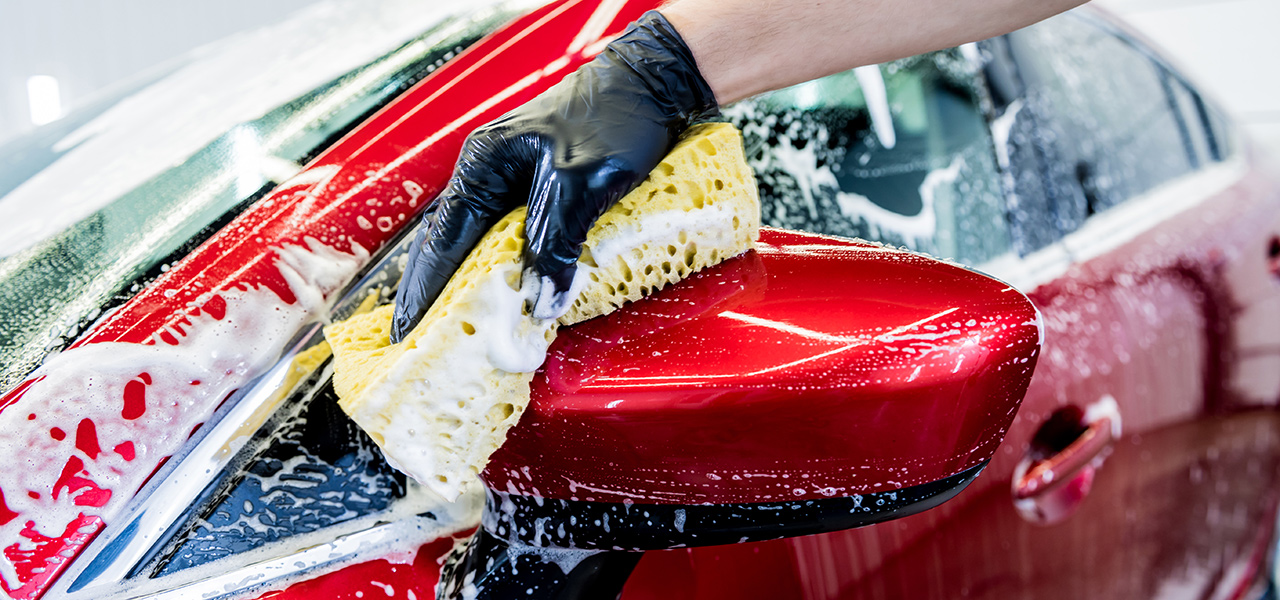
Free Download: The Real Truth and Myths about Ceramic Coating
Wash Your Car
Before you do anything else, you must decontaminate your car. Decontamination washes both remove all dirt and fix any imperfections in your clear coat. Any particles or imperfections will stand in the way of your ceramic coating from bonding correctly to your vehicle.
In order to properly wash your car, it is highly recommended that you use the two-bucket method to hand wash. This method calls for one bucket of soap and one bucket of clean water. If you live in an area that requires you to limit your use of water, you can use cleaners that are dedicated to rinse-less policies.
The soap you choose must be aggressive enough to completely clean your car. You shouldn't choose a soap with wax, but it doesn't matter what pH it is. Try to pick a soap that foams up well, and having silica dioxide is a plus.
If the soap you choose has silica dioxide, you can use it to wash your car after your ceramic coating has cured as well. SiO2 has properties that will help protect your coating.
You shouldn't go to just any car wash, either. Going through a mechanical car wash means subjecting your car to aggressive brushes that can damage your exterior. If you'd like someone else to do it, your best bet is to get to a detailing center that you know follows gentle procedures by hand.
Paying a professional to apply a ceramic pro coating to your vehicle is the best option. Professionals follow a four-step process dedicated to preparing your car perfectly for a ceramic coating.
Once you're done washing your vehicle, do not worry about drying it. It is only important that you have completely rinsed any and all soap and residue off of your vehicle before you move on.
Remove All Iron Particles
The next, more dangerous, and risky step is to remove all iron deposits on your car's clear coat. Iron deposits, also called industrial fallout, are the result of metal friction or burning.
Industrial fallout can occur from simple, everyday tasks that wear at the metal on your car, like applying your brakes. Brake pads press against the rotor, creating a fine dust of iron that spreads around your car. These deposits can attach themselves to your clear coat and prevent your ceramic coating from bonding properly.
To decontaminate your car's exterior from any iron particles, you'll first want to remove your vehicle from the sun. The chemical you must use to remove iron can dry quickly in the sun, but you need to chemical to stay wet to do its job.
You'll also want your car to be wet when you apply this chemical. That's why this step works really well if you do it right after you wash your car.
Make sure to buy a good iron-removal spray to complete this job. Read the directions carefully before you begin.
Before you apply the chemical, make sure to put on a mask, goggles, and gloves. This chemical is very aggressive and can harm you if touched or breathed in.
In most cases, you'll need to apply the chemical by spraying it on an area you can watch. Let it sit for a few minutes, then rinse it off.
You'll know it's working when you can see streaks of reddish-purple run down your car. This coloring is the iron that is melting off your clear coat. Make sure you've rinsed off all of the streaks thoroughly.
Correct Any Issues With the Paint
We mentioned before that your ceramic coating could only work as well as you've prepped your car. It can enhance the look of your paint, but only if your paint is ready to be coated. Before you apply the ceramic coating, you must correct any issues with the paint.
The best time to add a ceramic coating is right after you've bought a new car. This will make it very easy to add the ceramic coating, as you won't have all the normal wear and tear that older cars will. You will still have to follow the proper process, though.
Unfortunately, this step will be a lot more involved than washing or removing iron. You'll need to make sure that all the paint is polished and no swirl marks are left. The trickiest part is being thorough without doing any damage to the clear coat.
For this step, you'll need a polisher and a cutting compound. There are tons of cutting compound and polishing pad options on the market, so it can get really complicated if you aren't careful.
How to Polish Your Car
Don't know how to polish your car? You'll want to perform this job in two stages.
The first stage is to remove any imperfections in your paint, whether it is swirls, marring, or stains. The second stage is to finish off the exterior with a beautiful polish.
For the first stage, you'll want to get about a 5 or 6-inch polishing pad. Slightly dampen this pad and apply it to your polishing wheel. Use this polisher with a top-notch cutting compound that you've applied moderately to one panel of your car.
Turn on the polisher to a medium speed and spread the cutting compound while holding the pad parallel to the car's surface. As the surface warms up, scratches will begin to disappear from the clear coat.
Keeping the area wet and using the right amount of polish will ensure that your car is left with a beautiful shine. You should always stop every once in a while to rinse off the polishing pad to make sure it doesn't have too much built-up product.
Once you're satisfied that all the imperfections are gone, you can move on to stage two. Switch to a finishing pad and a finishing compound. Repeat the steps above to polish your car with the new product.
Your finished car should look scratch-free and glossy.
Free Guide: Denver Automotive Ceramic Coating Cost Guide
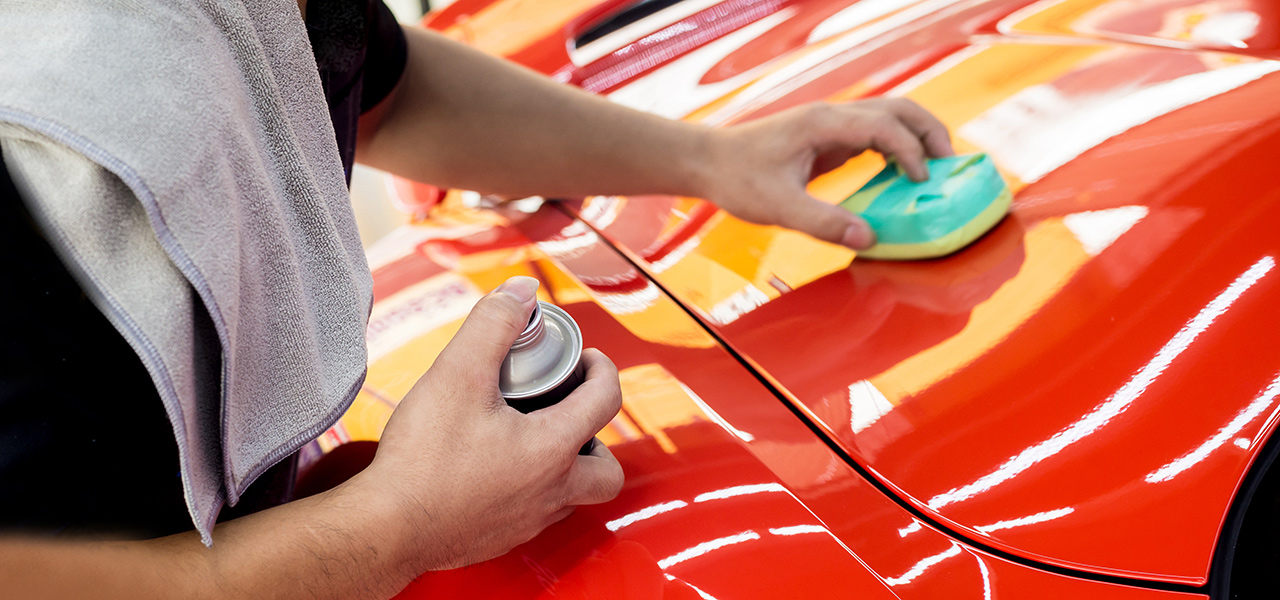
Degrease Your Exterior
Once your car is completely clean, decontaminated, and scratch-free, you can move on to the final step. You'll need to now make sure your car's surface is free of all residue that will stop the ceramic coating from binding to your paint.
For this stage, you'll need to buy a chemical that degreases your car. A degreaser will remove any oils, waxes, and other residues that you might have applied while polishing. Polishing might have been difficult, but thankfully, this panel wiping step is very simple.
For this step, it's important to find a cloth that will not leave lint. The best choice is a lint-free microfiber cloth.
Spray your degreaser on a microfiber cloth and wipe your car's exterior. Go panel by panel to make sure you've covered every square inch. Follow this step with a clean microfiber cloth by buffing the areas.
Find the Perfect Ceramic Coating Professional
If you are considering applying a ceramic coating to your car, then it's very likely that you want the best for your vehicle. Prepping your car for a ceramic coating and applying that coating require perfect technique and high attention to detail. Hiring a professional means knowing your car will be in the best hands.
If you're in need of more car advice, Colorado Clear Bra is a group of highly-trained and experienced professionals who can satisfy your every need. If you need a ceramic coating in Denver, fill out our form to get an estimate today!






